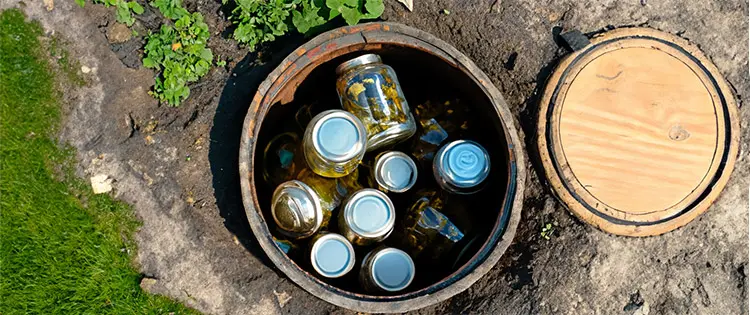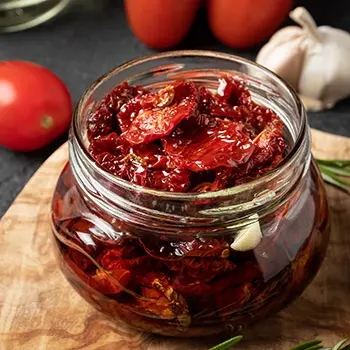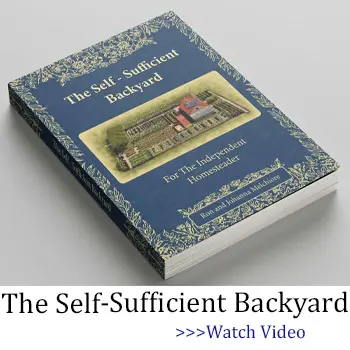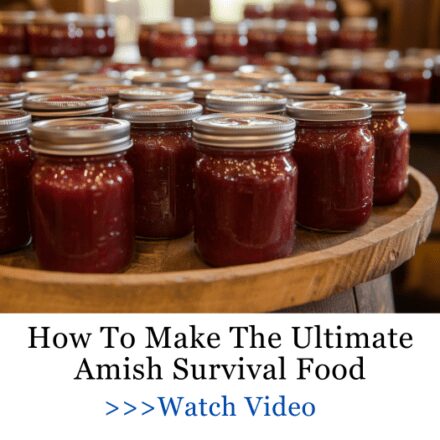Storing food for survival situations is essential for any homesteader. It’s crucial you have enough food supplies to last until the next harvest or for an emergency. If you don’t have access to traditional storage options like root cellars, there are alternative solutions available.
By having a supply of food that is safe, nutritious, and capable of being stored for a long period of time, individuals can feel prepared for a variety of situations, including power outages, natural disasters, or other unforeseen circumstances.
In this article, I’ll explore five cost-effective ways to store food for a long time.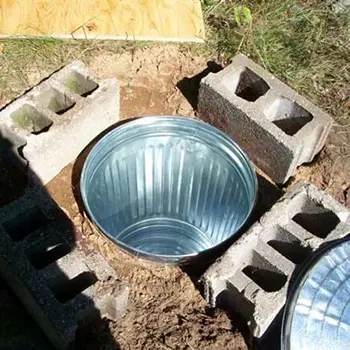
Improvised Root Cellar
You can make an improvised root cellar by using a large plastic storage container or a metal trash can.
This container is buried in the ground with only the top exposed, and a hinged lid is added for easy access. The container’s interior is lined with straws, and the food is piled up inside. This method can be used to store potatoes, carrots, beets, and other root vegetables.
That’s a great way to store fruits and vegetables, especially when you need to store more than you have room for indoors. And you don’t need electricity for it.
Pantry
Invest in some good quality shelving to ensure adequate storage space. To fully leverage available space and efficiently organize your pantry, consider these practical tips.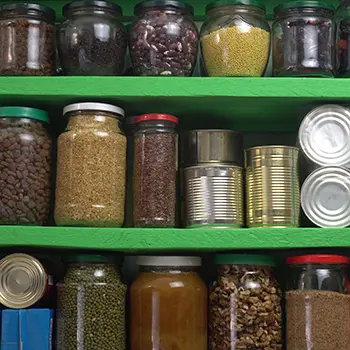
Firstly, utilize vertical space by installing stackable shelving units or hanging baskets.
Secondly, storing items in clear, airtight containers not only protects them from pests and moisture but also allows for easy identification. Labeling these containers can further enhance accessibility.
Thirdly, use a ‘first-in-first-out’ system to ensure the oldest goods are used first, minimizing waste.
Lastly, remember to regularly declutter the pantry, removing expired items and creating space for new supplies.
Can Rotator Wall
A can rotator wall is a fantastic option for storing canned goods. It is made up of several wooden panels with tilted wooden dowels that hold the canned food.
This method helps ensure that the oldest cans are used first, and a new can is rotated to the front of the row every time you use one.
Constructing a can rotator wall requires some basic carpentry skills, but with careful planning, you can do it in less than a day. The size of your can rotator wall depends on the space available and the number of canned goods you wish to store.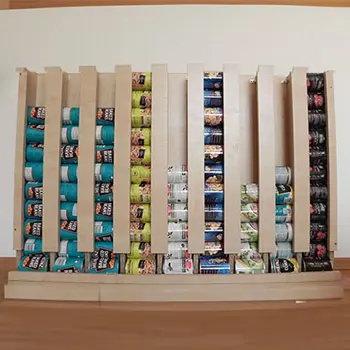
- Materials: The primary materials include plywood or solid wood panels for the frame, wooden dowels for the tracks, screws, and a saw.
- Planning: Start by measuring the space where the rotator will be placed. The design should allow cans to roll down from the back to the front using gravity. To achieve this, the dowels should slightly tilt forward.
- Building the frame: Cut the wood to fit your space. Make sure the frame is sturdy as it will be supporting weight.
- Installing the dowels: Drill holes into the frame to place the dowels. The dowels should be spaced adequately to allow the cans to easily roll down.
- Testing: Before securing everything, place some cans on the dowels to ensure they roll down smoothly. Make necessary adjustments if needed.
- Finishing up: Secure the dowels firmly into the holes.
Remember, safety should be your utmost priority when working with tools and wood. Always wear protective gear and work in a well-lit, ventilated space.
Dry Canning
Dry canning, also known as dry packing, has several benefits that make it a popular choice for long-term food storage. The process, which involves storing dried, dehydrated, or freeze-dried foods in airtight containers, effectively extends the life of various food items.
One key advantage of dry canning is its potential for preserving nutritional value. Unlike other preservation methods that may involve heat and thus degrade the nutritional content of food, dry canning keeps the nutrients in your food intact.
Another benefit is its simplicity and ease. It doesn’t require any special skills or equipment beyond airtight containers and an oxygen absorber. This makes it an accessible method for anyone to utilize in their home.
Moreover, dry canned foods are typically lightweight and compact, which makes them easy to store and transport. This is a benefit for those with limited storage space or for those who need to move their supplies in emergency situations.
Coolers and Ice Chests
Coolers and ice chests may not be the first things that come to mind when you think of long-term food storage, but they can be useful in a pinch.
These portable storage solutions can be used to keep your food cool and fresh if your electricity goes out. And if you line them with straws or newspapers, they can provide insulation to keep your food warm in the winter.
Coolers and ice chests have several benefits which make them a good option for food storage.
Firstly, they maintain a consistently cool temperature, prolonging the shelf life of perishable items and reducing the risk of food spoilage.
Secondly, they are portable, allowing you to transport food items safely during trips or emergency relocations. The robust construction of coolers and ice chests also protects stored items from physical damage or exposure to adverse weather conditions.
Final Thoughts
Having long-lasting food storage options available is crucial in case of emergencies. While not everyone has access to a large root cellar, there are several alternative storage solutions that can be used instead.
By considering these alternative storage options during your next harvest or grocery run, you can ensure that you have enough food to last through any emergency situation without worry.
You may also like:
100+ Long Lasting Foods that Can be Stored Without Refrigeration (Video)

